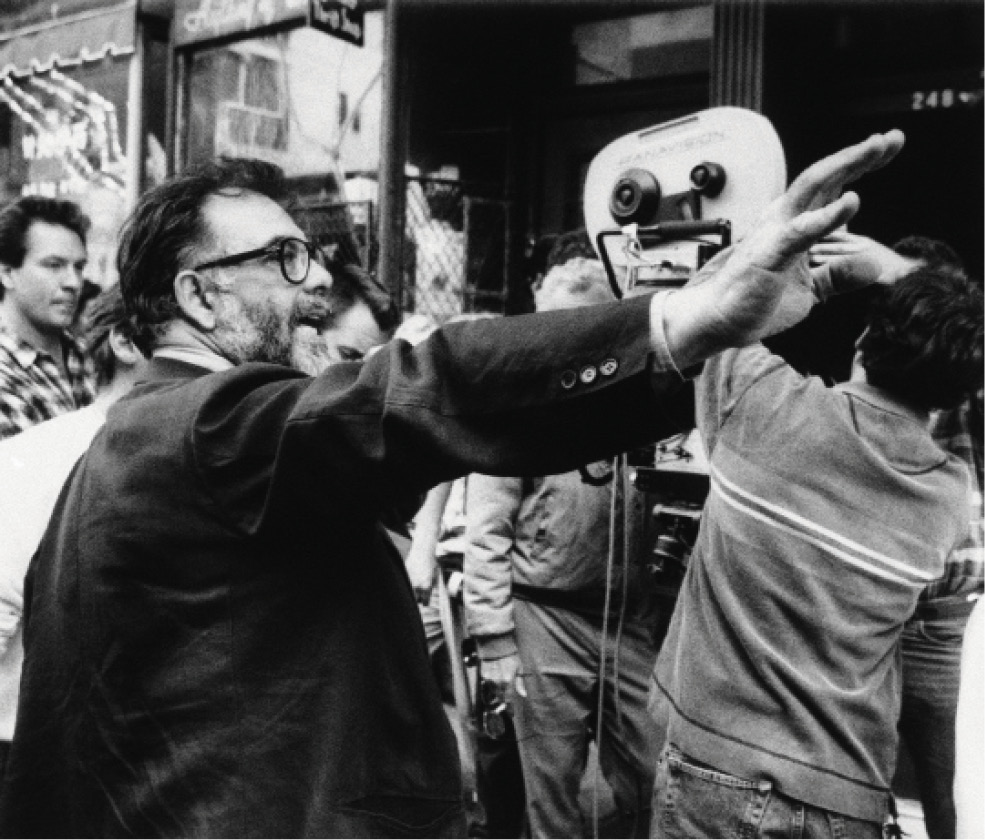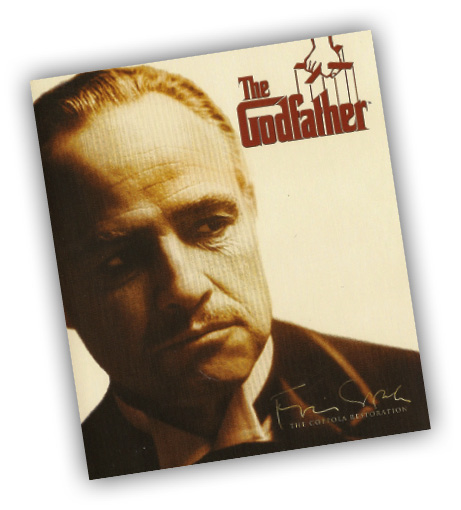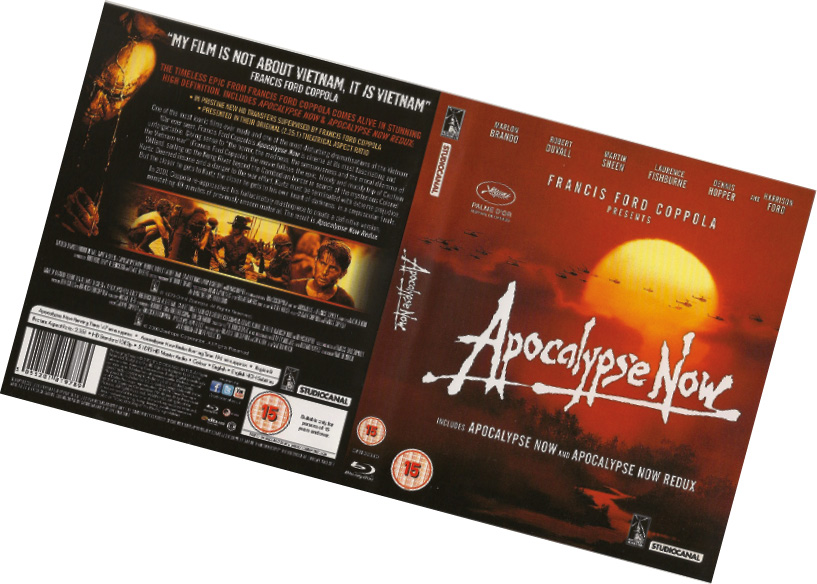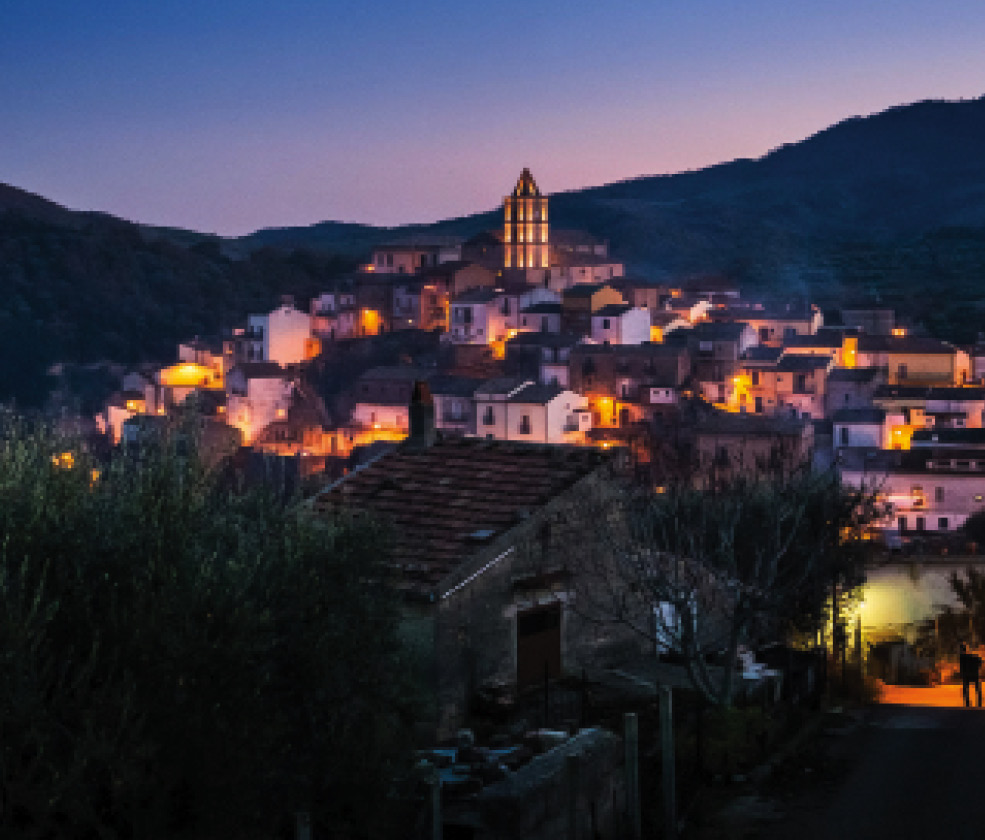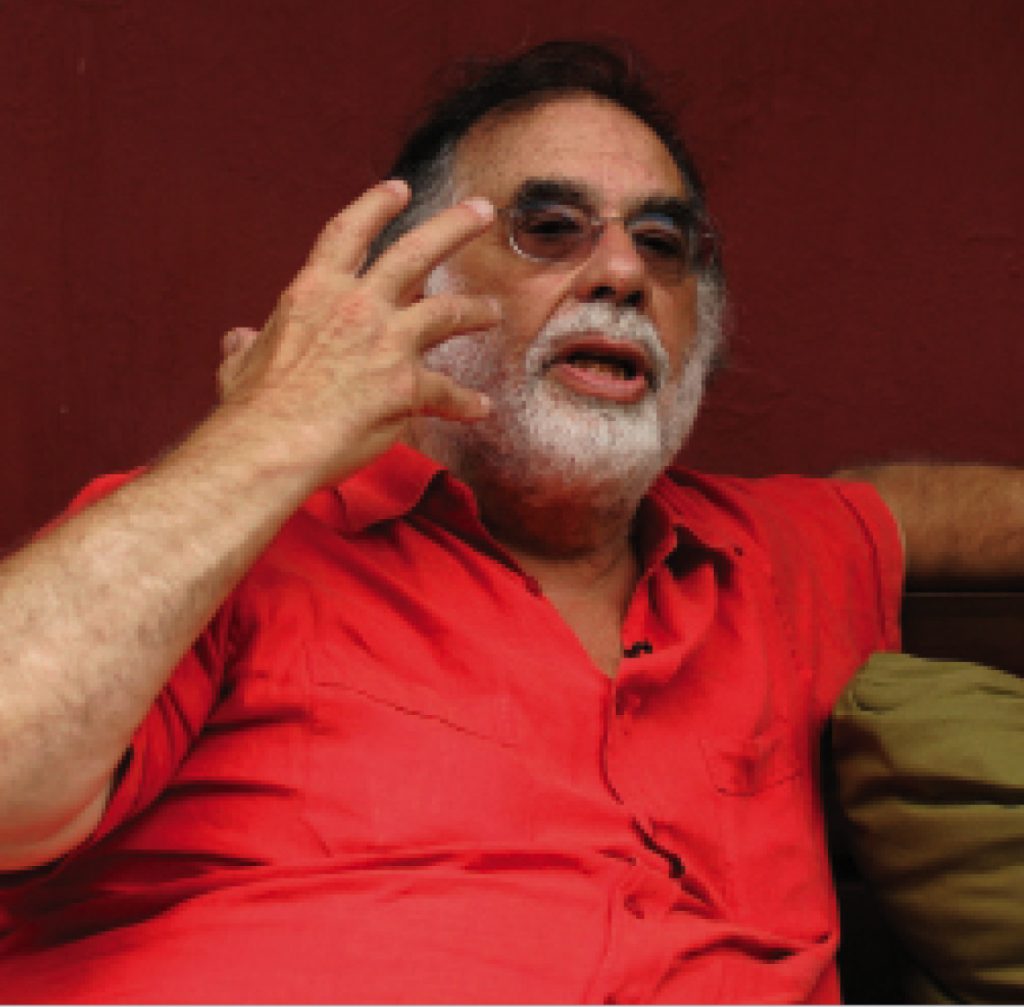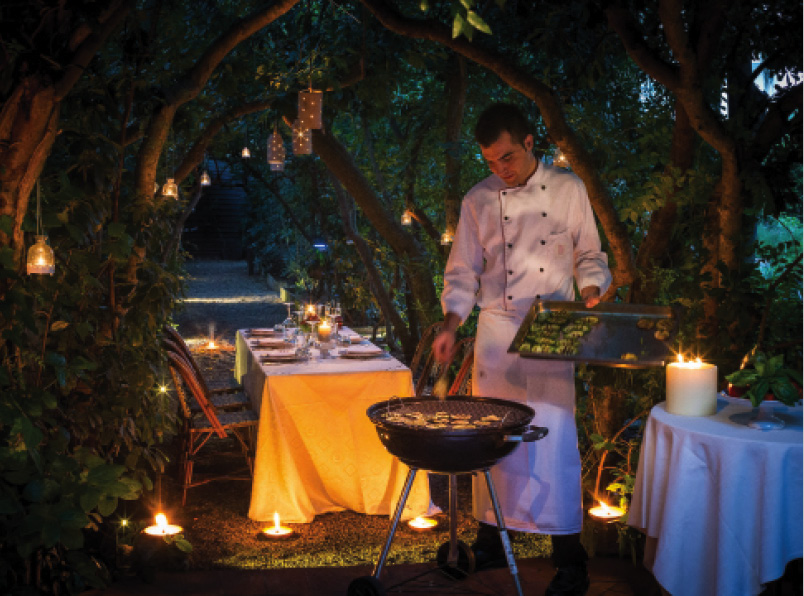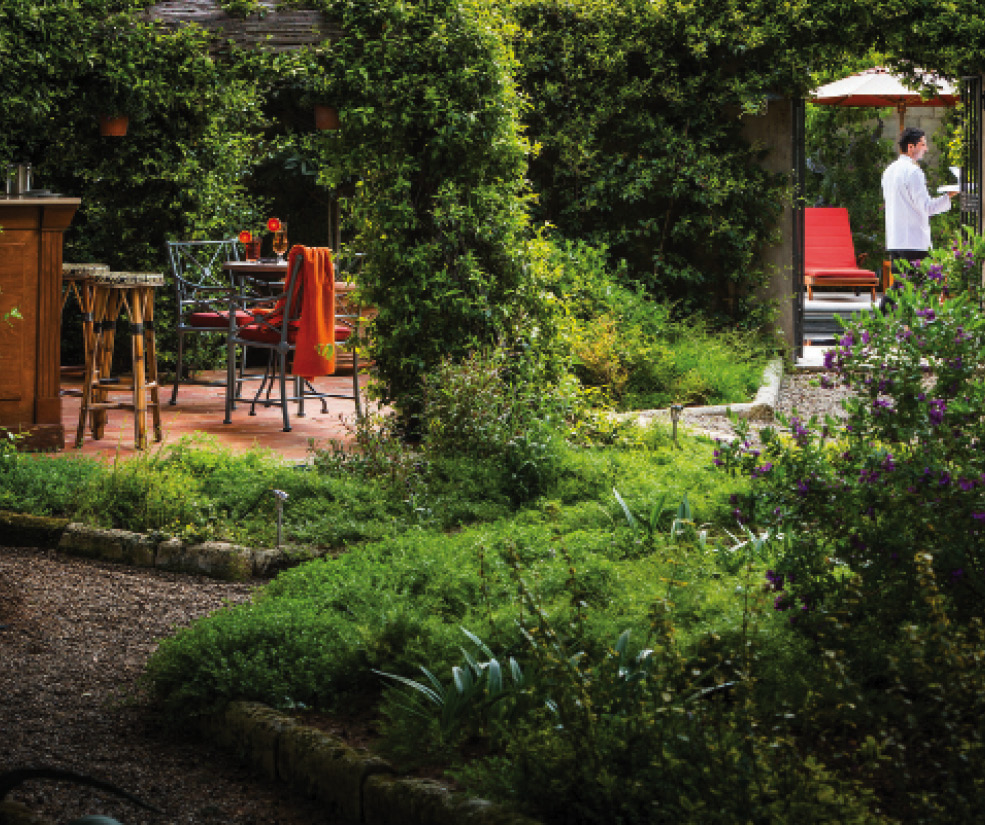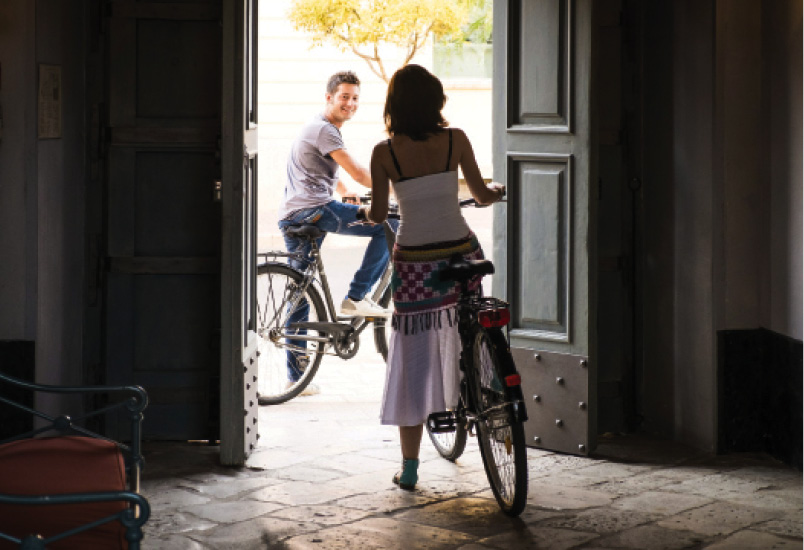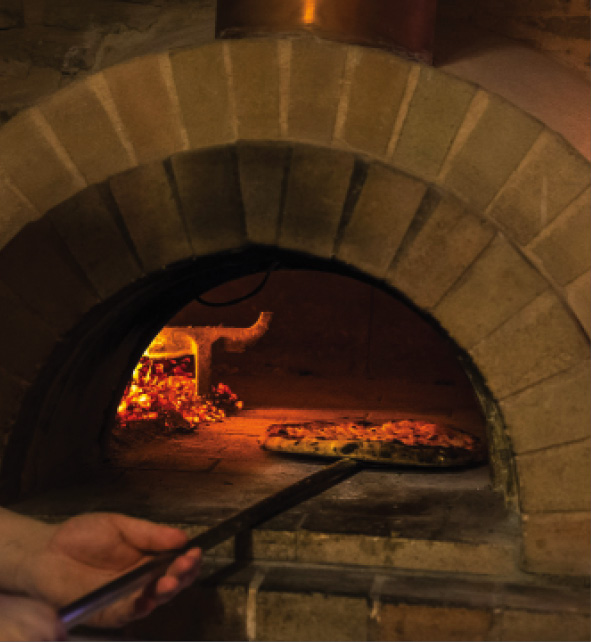Francis Ford Coppola is one of the biggest names in movie-making history. Famed for his Godfather trilogy, which was based largely in Sicily as well as America, his family harks from Basilicata. In this issue of Italia! James Miller visits his palazzo in the region and gets to speak with the man himself…
Throughout history the Italians have been known for their zest for life, their family values and irrepressible creativity. This characteristic artistic force has been personified over almost six decades by the cinematic master Francis Ford Coppola, the internationally recognised director responsible for masterpieces including the Godfather trilogy, Apocalypse Now, Rumblefish and a panoply of other defining works that have entertained film-goers since the 1960s.
Like many Italia! readers, I’ve enjoyed the fruits of Francis’s labour, especially the rustic and cultural detail of Sicily depicted in the Godfather films. So you can imagine my excitement when I received an invite to a presentation Francis was giving at the Teatro dal Verme in Milan. The invitation promised an evening celebrating his life and passion for his ancestral home of Basilicata and the restoration of the Palazzo Margherita, a project dedicated to the famiglia Coppola. And as if that weren’t enough, I was further invited to stay at the Palazzo as a guest, with a follow-up possibility that he might – just might! – find the time in his busy schedule to respond to a few of my interview questions. Interviews with Francis Ford Coppola are rare. Would he conduct one for Italia! magazine?
As I touched down at Milan airport, the prospect of experiencing Francis Ford Coppola’s creativity and expressions of cultural and familial values first hand was creating a surreal sense of excitement; I felt as though, in this instance, it was me that was playing a part in a film.
Anticipation
I took my seat in the theatre and, along with the other attendees, sat in anticipation, awaiting the arrival of the maestro. When Francis arrived he took centre stage and was venerated with rapturous applause. He greeted the crowd warmly and was clearly pleased to be sharing the evening with a captivated audience keen to hear about his beloved Bernalda in southern Italy and his Palazzo Margherita. It didn’t take long for him to begin engaging the crowd and expressing his sentiments about Italian values and his own intriguing family history, explaining how the creative impulse runs deeply in the Coppola ancestry.
Both sides of Francis’s family have a musical background: his grandfather, while serving in the army, saw Donizetti’s opera Lucia di Lammermoor and it clearly struck an emotional chord as he returned every day to see it again. So enamoured was he that he vowed that his son would learn to play the flute, and so Francis’s father did just that, going on to become an accomplished flautist. His creative influence surely contributed to Francis’s own love of music and propensity for expression and, with four generations of the Coppola family having been involved in the film industry, creativity is clearly a prominent family trait.
Francis’s family values were a strong theme throughout the presentation. Closely tied to his sense of personal identity as a man of Italian origin, he fondly recalled how his mother used to tell him that he lived in the best country in the world, America; however, his father would remind him that he was an Italian and Italy was the greatest country in the world, famous for its scientists and artists.
This point resonated with the audience’s collective cultural pride, which congruently responded with an eruption of applause. Every inch the film director, Francis continued to describe the scene of how the Italian cultural tapestry was imported into the New World when locals from Basilicata braved the long journey across the Atlantic and introduced America to their unique culinary signatures and native dialect particular to the region of Basilicata.
Enchanting
Introducing the audience to his love for his ancestral home, the town his grandfather Agostino affectionately referred to as Bernalda bella, Francis recalled his first trip to Basilicata as a young man. He animatedly described his sense of bewilderment at this enchanting southern Italian village, and how he was blown away by the hospitality. So generous in spirit and appreciative of the opportunity to host their American guest were the locals that a newly married couple relinquished their first night in the marital bed to make sure Francis had somewhere to sleep.
As Francis effusively described his love for the people of Bernalda, it became clear that such munificent hospitality is a characteristic of the townsfolk. As well as the unspoilt natural beauty of the region, unsullied by commercial tourism, the inhabitants represent what Francis described as the ‘true Italy’.
The velocity of Francis’s enthusiasm was in full swing when he pronounced to the audience that he truly ‘feels’ Italian, particularly when he experiences the simple pleasures in life such as seeing a child or listening to a beautiful piece of music. The simple pleasures in life, that are embraced – some might say revered – by the people of Bernalda bella.
It was a pleasure to hear Francis describing his dedication during the restoration of the Palazzo Margherita, returning it to its former glory and lovingly applying sentimental accents that are uniquely personal to the Coppola family, and his sense of giving back to his cherished homeland. It sounded like a deeply personal and transformative experience. I could only imagine he must have felt a sense of closing the loop on a creative legacy that started in Bernalda. After the presentation I wandered the streets of Milan and, whilst taking in the magnificent architecture of the cathedral, I was eagerly anticipating the next stage of my adventure: my trip to Bernalda to indulge in the delights of the Palazzo Margherita.
Exhilarating
My return trip to Italy began with an exhilarating drive through the countryside of Basilicata. I arrived at the Palazzo and the convivial staff greeted me with a warm welcome and ushered me inside. Typical of many of southern Italy’s palazzi, you don’t really get a sense of size or scale until you step through the immense panelled doors. As I walked across the age-old tiled floor, I noticed the cobbles were smooth and timeworn. An ornate lamp emitting a subdued blue glow was suspended above me – the moment possessed the magic and exoticism of the Ancient East. Across the courtyard were archways inviting me into a bucolic garden illuminated by the moonlit dark blue sky. I sensed an atmosphere imbued with fascination and allure, no doubt masterfully conjured by the artistry of Mr Coppola himself.
I was given a short tour of the grounds and I was made aware that Francis’s daughter, Sofia Coppola, enjoyed the intimacy and arcadian ambience of the beautiful Palazzo garden and its ornate bubbling fountain. At this moment I couldn’t think of a better location to enjoy a fairy-tale wedding fit for a princess. Next, I was shown to my room, the Roman suite, which had been named after Francis’s son. The vaulted frescoed ceilings and décor were adorned with flourishes from the Art Deco period. The detail and perfectionism were entirely in concordance with the vision of a creative virtuoso.
After an intoxicating arrival at the Palazzo I was delighted to see that every conceivable comfort was available in my room. From the bathroom fittings finished with the finest English porcelain to the sheets and pillows that I melted into when finally retiring to bed.
This level of luxury and quality assured a blissful night’s sleep, from which I gently emerged the next morning due to the chirping birds fluttering around the terrace outside my room. After a brief “Where am I?” moment, I looked around the luxurious room and it all came flooding back. “That’s right, I’m staying in the Palazzo Margherita.”
Not wanting to squander my experience I walked out to the terrace. The terracotta-coloured parasols and cushioned lounge furniture harmoniously complemented the gentle tones of the Tuscan marble adorning the Palazzo walls. The grand architecture was perfectly synchronised with the lush, edenic gardens. This was Shangri-la, Italian style. A hearty breakfast was served by professional and attentive staff attired in smart culinary uniforms and was enjoyed in the Palazzo’s eat-in kitchen, a place that had the intimacy of a family setting but with the courteous and heedful service of a stately home.
I was then granted a tour of the Palazzo by the staff, who delighted in showing me some of the other suites. Francis’s own suite was simply sublime; dedicated to his Tunisian-born grandmother, Maria Zasa, it had a curious and masterfully combined convergence of simplicity, light and the intricate flourishes of north African style.
My host led on, from the distinctly exotic to the elegant romanticism of the Sofia suite, devoted to Francis’s daughter. This room was charmingly styled, evoking an enchanting, dream-like ambience that was soft and feminine. The Palazzo had other hidden treasures, such as the handsomely decorated family bar with its Murano glass chandelier and polished dark wooden interior. Francis’s enduring passion for cinema was discernible by the Cinecittà bar, a celebration of film; and for guests who feel the need to satisfy their appetite for the silver screen, the Palazzo has its own private screening room.
La Vita Bella
With Francis’s fervent narrative of Bernalda bella during the presentation in Milan, I was keen to experience the town first hand. As I strolled along the streets, I was delighted to experience the charm and quaintness he had described. The hustle and bustle of the shopkeepers and café owners combined with the tranquility and mellow pace of la vita bella.
Contented elderly Italian gentlemen embracing life, chatting and catching up with friends on benches, and the classic Italian matriarchs tending to the needs of their excitable children. Entirely at ease with the setting I was perfectly happy enjoying the local sights and sounds – Bernalda is a quintessential southern Italian town possessing all the characteristics that endear us to this captivating part of the world.
Upon the recommendations of Christine, a director in Francis’s employ, I ventured out to experience the nearby town of Matera, famous for its cave-like dwellings that were, until the 1950s, still housing impoverished families in cramped conditions. Whilst recent times have seen an upsurge in tourist interest and development, with B&B’s, cafés and restaurants springing up, the area offers a fascinating insight into the challenges of subterranean living of a bygone age. The eerie experience was a distinct contrast to vibrant Bernalda.
The Cathedral was of particular interest, as were the meandering streets that traverse the multiple levels of this haunting and curious town. As I drove back through the lush countryside I really got a sense of what Francis was referring to: this is a land that benefits from the bounty of nature, with beaches and rolling hills that are often enjoyed by cycling enthusiasts and fans of the great Italian outdoors.
That evening I enjoyed a glass of wine with Christine and some other guests, with whom I found instant common ground as fellow adventurers appreciating this stunning corner of Italy. We were all spellbound by the experience in our intimate retreat, the regal setting of the Palazzo. Christine explained that the Palazzo is by no means a project derived of ego, driven by emotional impulse rather than any business strategy. Francis is motivated by his art; his vision was to create a sense of theatre and the performance is for the enjoyment and pleasure of his guests and family.
Speaking of theatre, I prepared myself for the first act of the ‘divine comedy’ when I was asked if I would like to make my own pizza in a traditional pizza oven. I was surprised at how simple the process looks but yet how deft of hand you have to be to get it right! However, I must say I felt I surpassed my gastronomic potential under the expert tutelage of the kitchen staff.
The following morning I prepared for my departure. Having stayed in many amazing residences across Italy, I can state with sincerity that this was an experience that will stay with me for ever. The beautiful countryside of Basilicata; the hospitable locals; the food, sights and sounds of Bernalda combined with the veritable paradise of the Palazzo made my stay one that will remain on constant loop in my own mental reel of Italian experiences. And, as the curtains come down on the final scene of my adventure in Bernalda bella, I’m delighted to say that I have found Francis Ford Coppola’s true Italy.
Francis Ford Coppola: The Italia! Interview
James Miller: The creative gene obviously runs very strong in the Coppola family. For instance, your father was the first flautist for the Detroit Symphony Orchestra and your sister, Talia, is an accomplished actress. Your own creative impulses started at an early age with your homemade theatre productions that evolved into the cinematic masterpieces we have all enjoyed. But how does the creative process of movie-making compare with the experience of designing the restoration of a grand palazzo?
Francis Ford Coppola: I always find creative projects to be very much the same process, usually in three parts.
1) The planning/gathering stage (ideas and source material), 2) The editing (fining, selecting, coming together and the finishing). And ultimately 3) presenting to the guests.
JM: Much of the Palazzo Margherita seems to have been designed as a labour of love; notable expressions of this would include the ‘Gia’ suite, designed as a gift for your grand-daughter Gia Coppola and the Tunisian design accents that are an acknowledgement to your Tunisian-born grandmother, Maria Zasa – also the ‘Sofia’ suite, designed to reflect the character of your daughter. Family values are clearly treasured in the Coppola clan and nowhere is the appreciation of family time more prominent than in southern Italy. What would you recommend to potential guests of the Palazzo Margherita for enjoying their precious family time?
FFC: One wonderful aspect of the Palazzo is that it is located in the centre of a real Italian town, not a touristical area where you don’t see what the real Italy is like. In Bernalda you are participating in a real town with real people who are curious to meet you and be hospitable, not catering to a touristical centre and making money from you. Every day there’s a long afternoon walk down Corso Umberto, where you’re likely to greet others as neighbours and become part of the town. Once you do that, you’re hooked – and you’ll be back.
JM: The region of Basilicata has so much to offer visitors: its Ancient Greek ruins, medieval castles and incredible coastline to name but a few attractions. One of the region’s lesser-known treasures is the town of Bernalda, with its rustic, old-world charm, hilltop location and warm sense of community. Bernalda seems to typify the best of rural southern Italian culture. Would you mind sharing with our readers which aspects of the regional culture you find most appealing?
FFC: The food, totally unique; the dialect as well. And the nature of the people, their friendliness without losing the biting style and flamboyant emotion that is inevitable with passionate people.
JM: The different suites of Palazzo Margherita offer its guests a number of exquisite experiences: 20th-century Italian splendour contrasted with exotic Moroccan flourishes, romantic frescoes, ornate Art Deco styling and private gardens and fountains. I’m sure that guests of the Palazzo can really indulge their senses and immerse themselves in the realization of the original Coppola vision of Palazzo Margherita. Designing the Palazzo must have been a wonderful and inspiring process for you. What was the most enjoyable part of this creative adventure?
FFC: When it began to actually take its form and you could see the great talents of the people working on it
and it beginning to come together into a vision.
JM: You travelled to your ancestral home, Bernalda, in your youth. What was your impression of the town at that time and do you still experience the same magic when you visit today?
FFC: I had a mental picture of Bernalda when I first went, because I had heard many of the stories from my father, that he had heard from his father. It was a magical place with colourful characters and fantastic food. And I would say that many years later, it still has that.
JM: Your grandfather, Agostino, who was a native of Bernalda, used to lovingly refer to the town as ‘Bernalda bella’. Now that you’ve revitalized the Palazzo Margherita and opened its doors to your own family and guests, do you feel as though you have closed the circle and truly connected you and your family to your heritage and roots?
FFC: Well, of course the Palazzo Margherita speaks of a lifestyle and luxury that the original Coppola family had no way of knowing. They were workers in the field, barbers, seamstresses and working people. The Margherita family were wealthy landowners, and they lived quite another life to that of our ancestors. But ironically, the villagers who left for America often found the proverbial ‘riches’ there and when they returned to their village they became a new aristocracy of the ‘Italian-American’. I guess that was the Coppola family’s situation. As my grandfather, Agostino Coppola passed on something vital and creatively beautiful that persists through the younger generation of the Coppola family to an extraordinary degree.

